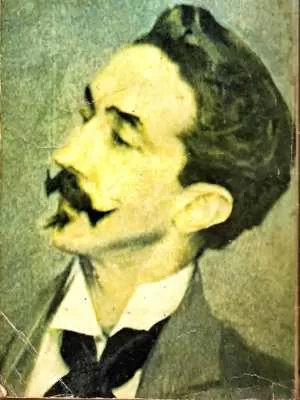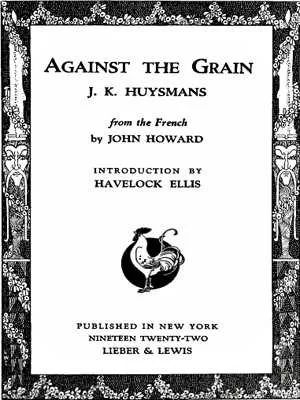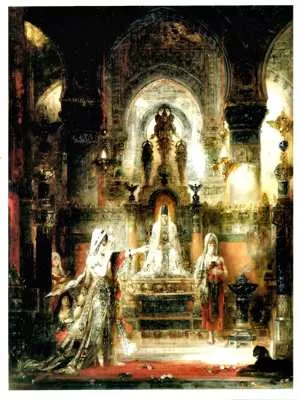Oscar Wilde, celebrated for his wit and plays, surprisingly wrote only one novel: The Picture of Dorian Gray. Published first in 1890 in Lippincott’s Monthly Magazine and later revised in 1891, this single work of fiction remains a cornerstone of Wilde’s legacy.
Unlike his more familiar plays and poems, Wilde’s novel has often been surrounded by controversy and fascination. At the heart of this intrigue is a mysterious “yellow book” within the story, which Wilde later hinted was inspired by Joris-Karl Huysmans’ A Rebours (translated as Against Nature or Against the Grain).
The Mysterious ‘Yellow Book’ in Wilde’s Novel
In The Picture of Dorian Gray, Lord Henry Wotton, a key character, gifts Dorian a ‘yellow book’ that profoundly influences him. Wilde describes it as “the strangest book that he had ever read.” The vivid description of this book suggests it serves as a moral and psychological poison, clouding Dorian’s judgment and leading him further into a life of hedonism and moral decay. Although Wilde never explicitly named the book, he hinted during his infamous trial that the inspiration was Huysmans’ A Rebours.

The Scandalous Influence of A Rebours
Published in 1884, Huysmans’ A Rebours was a sensation and a scandal in its time. Subtitled “A Novel without a Plot,” it focuses on the life of Jean Des Esseintes, a disillusioned aristocrat who withdraws from society to indulge in a series of bizarre and decadent pursuits. Des Esseintes, the ultimate anti-hero, represents a rejection of conventional morality and an embrace of aestheticism and sensory indulgence. Wilde, who admired Huysmans’ work, was undoubtedly drawn to these themes, which align closely with his own philosophies on art and life.
The Black Feast and the Bejeweled Tortoise
Huysmans’ novel is remembered for its vivid and often grotesque imagery, including the infamous “black feast” and the gilded tortoise. In the second chapter, Des Esseintes hosts a dinner where every dish and drink served is black: from caviar to black pudding, mulberries to dark wines. The menu, deliberately monochrome, mirrors Des Esseintes’ rejection of life’s ordinary pleasures and his embrace of the grotesque.

In another iconic scene, Des Esseintes has a tortoise encrusted with gemstones, rejecting traditional jewels like diamonds and sapphires in favor of lesser-known, exotic stones such as chrysoberyls and olivines. This act, a testament to his obsession with beauty and artifice, ultimately proves fatal for the tortoise. The creature, burdened by the weight of its jeweled shell, dies—symbolizing the destructive nature of excess and the perils of living solely for aesthetic pleasure.
The Artistic Inspirations: Gustave Moreau’s Paintings
Among Des Esseintes’ most treasured possessions are two paintings by Gustave Moreau, both depicting Salomé, the biblical figure who danced for King Herod. Moreau’s works capture the opulent and decadent themes that run throughout A Rebours. The first painting shows Salomé in the throes of her seductive dance, adorned in jewels and gold, commanding the room with her presence. The second captures her horrified reaction as she confronts the severed head of John the Baptist, a vision invisible to all but her. These paintings reflect Des Esseintes’ fascination with beauty, power, and perversion.

Inspired by Huysmans, many readers and artists have sought to recreate the bizarre splendor of Des Esseintes’ world, including Wilde, who incorporated the essence of these scenes into The Picture of Dorian Gray. This connection between the two works underscores the broader influence of decadent literature on the art and culture of the 19th century.
Wilde’s and Huysmans’ Impact on Decadent Literature
Oscar Wilde’s novel and Huysmans’ A Rebours became emblematic of the Decadent Movement, which flourished in the late 19th century. The movement celebrated artifice over nature, luxury over practicality, and the exploration of sensory experiences, often to the detriment of moral considerations. Wilde’s inclusion of Huysmans’ influence in his own work served as a nod to the subversive literary traditions that challenged the strict moral codes of Victorian society.
While Wilde was known for his charismatic public persona, Huysmans led a more reclusive life, eventually returning to Catholicism and retreating into a Trappist monastery. This divergence in their personal lives did not diminish the literary kinship between their works. Wilde’s fascination with A Rebours led him and fellow artist Aubrey Beardsley on a pilgrimage to meet Huysmans in Paris, only to be denied an audience by the author, who had by then distanced himself from his decadent past.
Why The Picture of Dorian Gray Still Resonates
The enduring popularity of The Picture of Dorian Gray lies in its exploration of timeless themes: the corrupting power of vanity, the allure of eternal youth, and the consequences of living without moral restraint. Wilde’s novel serves as both a critique and celebration of the decadent ideals he admired in Huysmans’ work, making it a unique contribution to literature. Despite its age, the novel continues to captivate readers with its blend of gothic horror, philosophical musings, and rich, evocative prose.
While Wilde only penned one novel, its impact has been far-reaching, influenced by a “poisonous book” that still intrigues literary scholars and readers today. Both Wilde and Huysmans captured the restless spirit of their times, challenging societal norms and pushing the boundaries of art. Their works remain essential reading for anyone fascinated by the complexities of human nature and the darker side of beauty.

